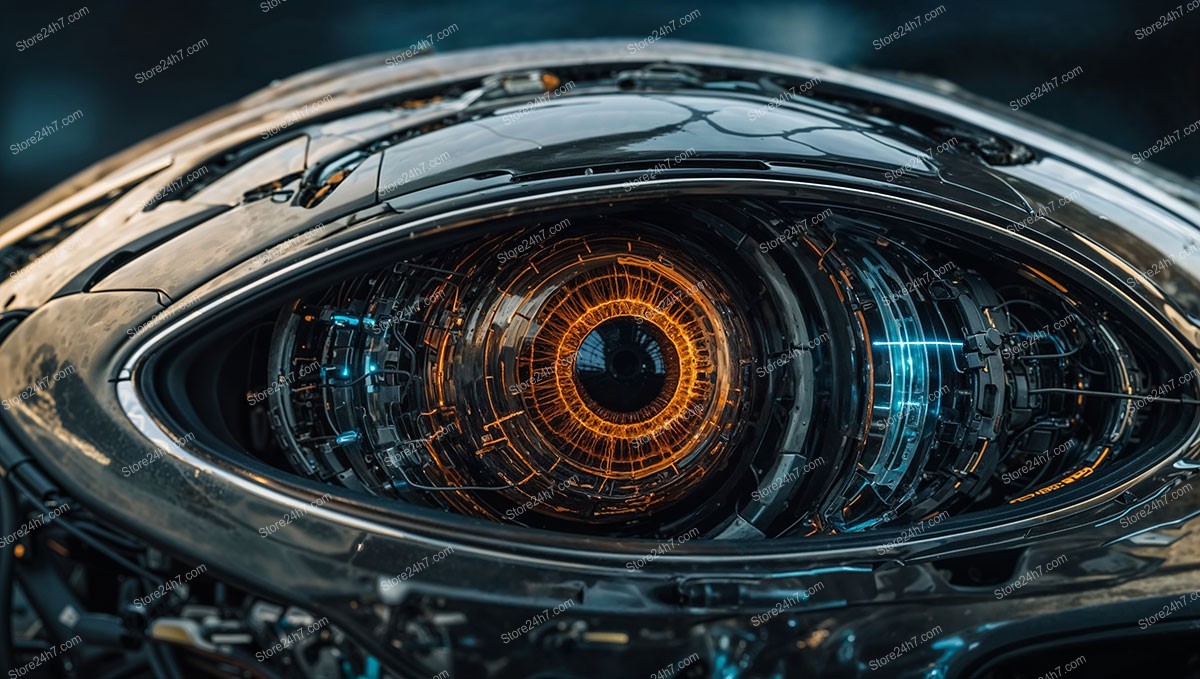Mechanical Eye Capturing the Essence of AI’s Vision
9.90 €
If you’d like to create a video from the image you found, we can do that for you. Please visit Image-to-Video Request Page for more information.
The image shows a futuristic mechanical eye, symbolizing artificial intelligence, with intricate layers of circuits and glowing lights portraying AI’s deep analysis abilities.
Dimensions: 4158 x 2352 px
Format: JPG
Hi-Resolution Image
This artwork represents a close-up of a mechanical eye, rich in detail, with concentric metallic parts resembling the iris and retina of a human eye. The eye’s internal structure is illuminated by orange and blue lights, suggesting the immense processing power of AI systems. The metal and glass design emphasize precision and a cybernetic aesthetic, representing how AI ‘sees’ and processes information at a higher level than human vision.
In this stylized representation of artificial intelligence, the eye is a profound metaphor for the future of machine learning, data analysis, and sensory capabilities. The mechanical eye, composed of many layers and intricate systems, suggests the complexity involved in AI’s ability to interpret data. Each component, from the outer layers to the inner core, reflects the intricacy of neural networks and deep learning processes. The glowing lights within the eye hint at the relentless flow of information processed by AI systems. The choice of an eye as the focal point highlights the idea of vision—both literally and figuratively—as AI extends human capabilities to observe and understand the world. Moreover, the design subtly underscores themes of control, surveillance, and enhancement, as AI evolves in ways that allow it to see more than humans can. This image powerfully evokes a sense of curiosity about the future of AI and its growing role in transforming our perception of reality.
Legal Notice
The AI-generated image or video may be used for any purpose, including commercial use, without restriction.
It is important to note that the images or videos may contain slight variations from actual anatomical structures, objects, and elements observed in the real world. This includes, but is not limited to, people, animals, buildings, vehicles, landscapes, and other natural and man-made features.

